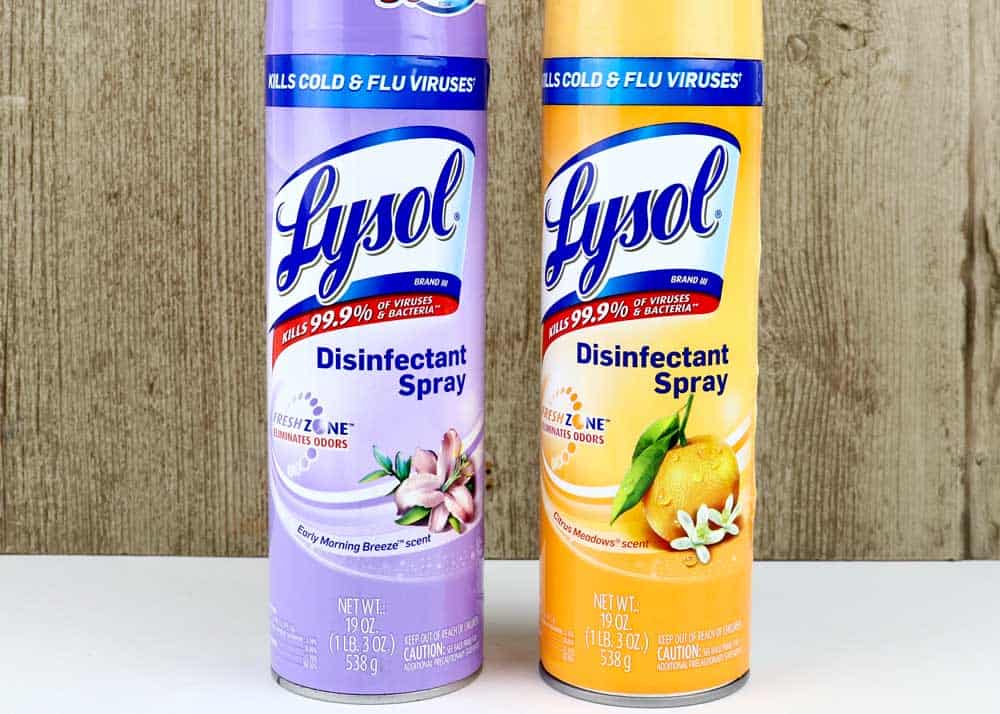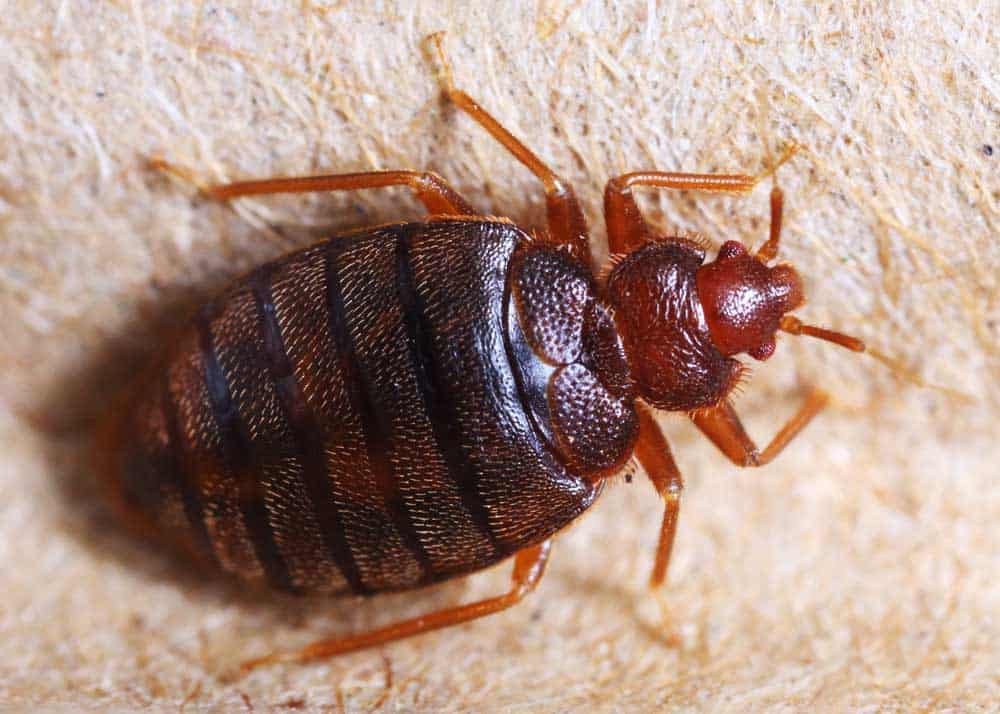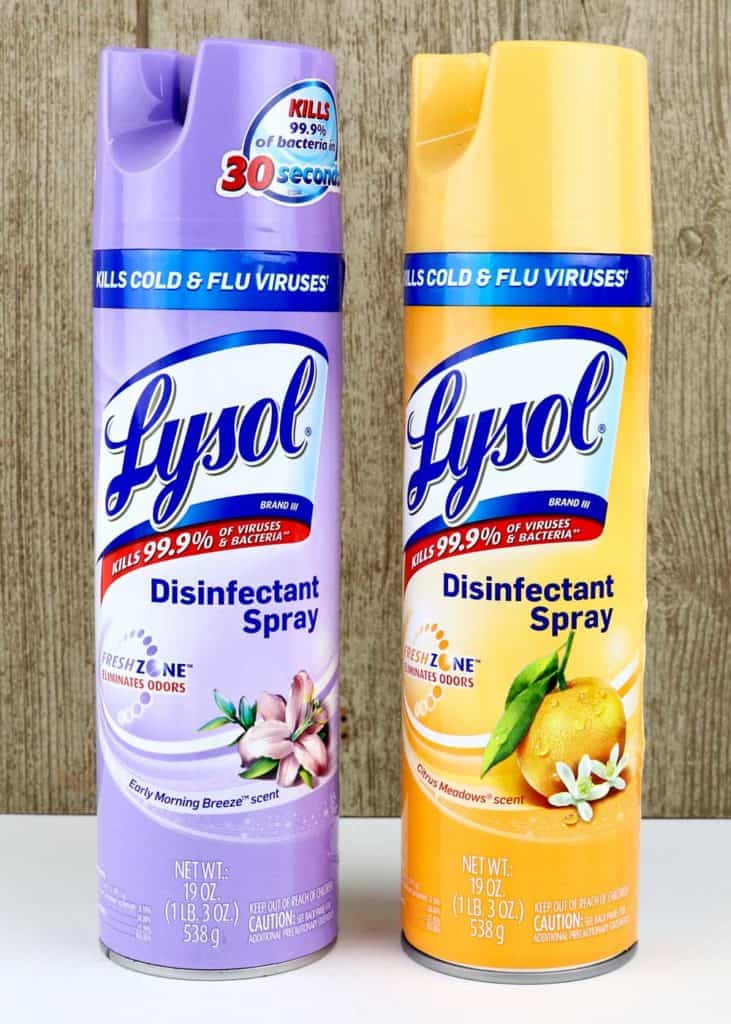Bed bugs are a big problem. And infestations can quickly spread from second-hand stores to apartment complexes and neighborhoods. Does Lysol kill bed bugs? What about other disinfectant sprays? It’s essential to know how to kill bed bugs and manage these infestations effectively to make your home healthy and comfortable again.
While Lysol can kill bed bugs, it isn’t recommended. To be effective, you’ll have to spray Lysol directly on the bed bugs. Evidence suggests that dried Lysol spray has no effect on bed bugs. The company that manufactures Lysol doesn’t recommend the spray as an insect killer.

Table of Contents
Can Lysol Kill Bed Bugs?
If you want to kill bed bugs with Lysol, you’ll need to get them fully wet with the alcohol and propellants in Lysol when treating the infested area.
Because of that, Lysol is an ineffective treatment for an infestation, and professionals don’t recommend it.
Here’s an expert opinion on using Lysol to kill bed bugs.
The only way that Lysol spray could help you is if you sprayed the bugs directly. The alcohols and propellants would probably kill bed bugs if you wetted them down with the material. However, dried spray on or around the bed would have no effect.
Dini M. Miller, Ph.D., Associate Professor in Urban Pest Management, Virginia Tech’s Department of Entomology
Does Lysol Recommend Using Lysol for Bed Bugs?
Does Lysol claim to kill bed bugs? No, there is no such claim on their site.
On their How to Clean a Bedroom page, they reference dirt and bacteria. But they don’t reference using Lysol products to kill insects.
The amount of time we spend in our bedrooms combined with the fact they tend to be decorated with soft furnishings means they can be a haven for dirt and bacteria. Follow our tips for how to clean a bedroom with Lysol®.
How to Clean a Bedroom, Lysol.com
Keep reading to learn about effective home treatments for bed bugs.

6 Effective Bed Bug Treatments
The United States Environmental Protection Agency (EPA) has over 300 products registered as effective bed bug treatments.
The active ingredients you should look for in products are:
- Pyrethrins (insecticide made from chrysanthemums) and pyrethroids (synthetic pyrethrins) cause bed bugs to evacuate their hideaways and die. However, there are strains of bed bugs resistant to these chemicals, so it’s best to use these in conjunction with other methods. You can find these in both sprays and foggers.
- Desiccants break down the outer layers of bed bugs, causing them to dehydrate and die. Because this is a physical reaction, bed bugs can’t become resistant to this treatment method. Make sure you purchase bed bug control desiccants for health and safety and utilize them only in cracks.
- Cold-pressed neem oil is processed from the seeds of Neem trees and is a biochemical insecticide that affects bed bugs at various life stages. It isn’t just an insecticide! It’s also in a variety of health and beauty products.
- Chlorfenapyr is a pro-chemical which has to be activated to be effective. Its use in insecticides causes cell disruption in bed bugs which kills them.
- Neonicotinoids are synthetic nicotine and cause bed bugs’ nerves to fire repeatedly and overwhelmingly until they die. Neonicotinoids are effective on bed bugs that are resistant to other insecticide ingredients.
- Insect growth regulators change how bed bugs develop, causing them to grow too rapidly or halt their development.
If you’re overwhelmed, take a look at the EPA’s product search tool.
You can search by what you’re interested in treating (like your bed rather than your whole house), what active ingredients you want, and even narrow it down to preferred brands.
How to Treat Your Bed and Furniture: 4 Steps
Start by stripping your bed or furniture and bagging your bedding and covers.
Your bedding will have to be washed and dried on high heat for at least 30 minutes, and you should store them in sealed bags until then.
The bed or other furniture will need to be cleaned in the affected area to avoid spreading the infestation.
Seal your mattress in a bug-proof mattress cover for a year to ensure any bugs in it starve and don’t reinfect your home.
You can use a steamer with a diffuser attachment to start the process of killing the bed bugs. Then, follow the instructions on your insecticidal product to treat the area, including the frame, headboard, floor, and floorboards.
Once dry, you’ll want to thoroughly vacuum the affected furnishing, empty and clean your vacuum, and you may consider a second treatment.
How to Treat Larger Areas, Such as Entire Rooms
If you need to treat an entire room, vacuum it thoroughly (empty and thoroughly clean your vacuum afterward), paying close attention to baseboards and other nooks and crannies.
Use a product made to cover a wide area, such as a spray with a large dispersal pattern.
Spray the area thoroughly, and don’t return until it has fully dried. Make sure you’re following all instructions on the container closely for your health.
How to Treat Your Entire Home
It may be possible to treat your entire home with products like foggers, but it would probably be best to hire a professional. To prepare for professional treatment, declutter, throwing away as much as possible.
Store any items that require storage in plastic and throw away all cardboard, which bed bugs can hide inside. You should thoroughly clean any non-trash items to avoid spreading the infestation.
Isolate your bed from the wall by at least six inches and seal it in a bug-proof mattress cover for a year to ensure any bugs starve and don’t reinfect your home.
Tuck in all bedding to ensure it doesn’t touch the floor. Place big interceptors under the feet of your bed frame to protect your bed and let you see how bad the infestation may still be.
Remove everything under the bed.
Bring in a professional to treat the infestation.
Monitoring is Necessary After Treatment
Infestations can be hard to beat, so regardless of your method of treatment, you’ll need to monitor the infestation to ensure the procedure effectively kills them.
It may take time for your approach to work, so initially, look for dwindling numbers, especially in traps.
Trouble locating the bed bugs? Here’s how to find bed bugs during the day.

More reading: Are Bugs and Insects the Same? 3 Differences
Hate biting bugs? Here’s our massive guide: How to Get Rid of Bugs
Your Turn
While Lysol isn’t an effective treatment option, various treatment options exist to help you battle bed bugs wherever they may be.
Following instructions carefully in this article and from your products will help you handle the infestation and stay safe.
If your infestation is too extensive, hiring a professional will save you time and money as you make your home safe and comfortable again.
- About the Author
- Latest Posts
Bryan Haines is a co-founder and writer at The Buginator. And is working to make it the best resource for taking back the outdoors from biting, stinging pests.
He also blogs about travel at Storyteller.Travel and photography at Storyteller Tech. Bryan is a partner at Storyteller Media, a publishing company he runs with his wife, Dena.
